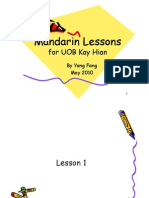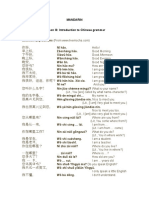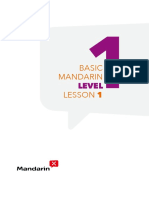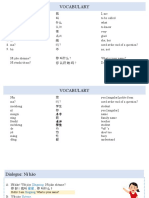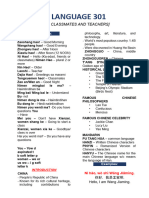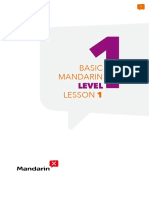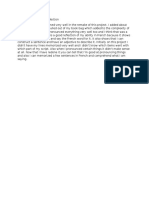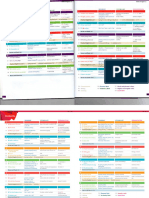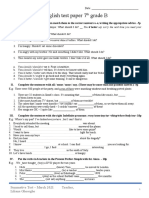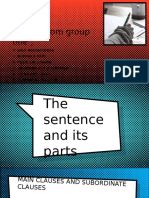0% found this document useful (0 votes)
54 views7 pagesBook 1 Grammar Points
The document outlines grammar points and vocabulary from the first five lessons of the New Practical Chinese Reader Book 1, covering Pinyin letters, basic verbs, pronouns, and common phrases. It includes exercises for vocabulary matching, fill-in-the-blanks, and forming questions to reinforce learning. Key phrases for self-introduction and polite requests in Chinese are also provided.
Uploaded by
hellashuiCopyright
© © All Rights Reserved
We take content rights seriously. If you suspect this is your content, claim it here.
Available Formats
Download as DOC, PDF, TXT or read online on Scribd
0% found this document useful (0 votes)
54 views7 pagesBook 1 Grammar Points
The document outlines grammar points and vocabulary from the first five lessons of the New Practical Chinese Reader Book 1, covering Pinyin letters, basic verbs, pronouns, and common phrases. It includes exercises for vocabulary matching, fill-in-the-blanks, and forming questions to reinforce learning. Key phrases for self-introduction and polite requests in Chinese are also provided.
Uploaded by
hellashuiCopyright
© © All Rights Reserved
We take content rights seriously. If you suspect this is your content, claim it here.
Available Formats
Download as DOC, PDF, TXT or read online on Scribd
/ 7





























